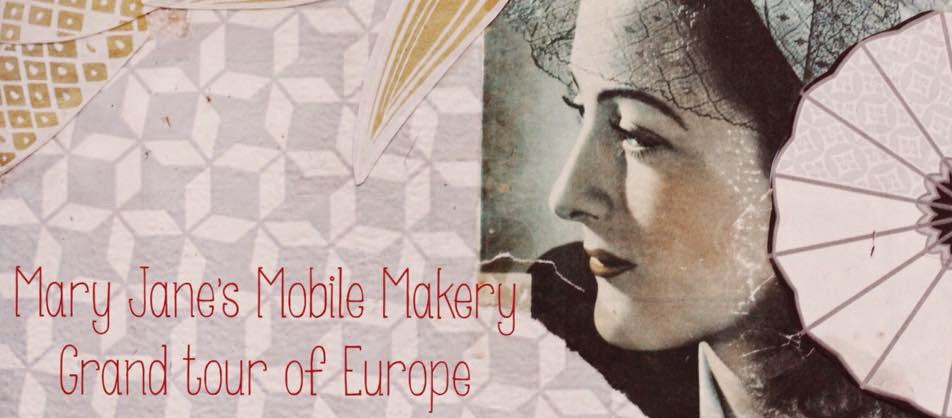Whilst visiting Edinburgh this weekend I picked up a great bargain from one of my favourite vintage shops -
Armstrongs in the Grassmarket. I purchased a red leather thrifted skirt. It cost me just £10.
There was just one problem.
It didn't fit!
Two choices: alter it or diet.
I say NO to diets!
Well, the skirt fitted well on the hips, but the waist was tiny. I just couldn't do it up. It had also obviously been worn by someone a little bigger beforehand, as the waistband was warped. However, it was such a good bargain, I felt I just had to buy it and give it a go. I considered taking it to be altered as it was leather and I wasn't sure I could manage the job myself, and then I thought: 'come on MJ - call yourself a make-do-and-mender? What are you doing? You should absolutely do this job yourself. It's not as if you're run off your feet at the moment - and besides, an alteration will cost twice as much as the skirt itself!'

It didn't look an easy job. As well as having a fair few seams, the skirt was lined and had a fitted waistband with a button. I measured my waist and the skirt waistband. Ahem. There was a good 3.5 inches difference. There was no way I would find enough leather at the bottom of the skirt to add to the waistband, and besides, with the number of seams, and the zip, it would be far too complicated.
And so...I decided to remove the waistband altogether, and see if there was some way of expanding the waist without it. I used a stitch unpicker, and in fact, it came away really easily.
I realised that without the waistband, the leather was actually quite stretchy, held firmly by the lining. I decided to undo the lining from the top of the skirt, trim it down slightly, fold over the top edge and tack it down. Then I would be able to slip the tacked lining back underneath the leather edge of the skirt, turn the leather back on itself by half an inch and hopefully stitch it all down again whilst skimming the top of the zip. That would certainly make the waistband bigger, but would it be enough? It's not easy to pin leather but I had a go, and by doing so was able to try the skirt on. And it seemed to fit pretty well.
Using a leather needle on the sewing machine and by taking it very slowly, I managed to stitch around the top edge fairly neatly. The leather stuck a bit to the plate beneath the machine needle so I had to guide it through carefully, especially over the bulky seams.
I then added a hook and eye at the top of the zip to stop it from coming undone.
Here you can see the inside. It's not perhaps a couture finish, but dear reader, it works!
Here you can see just how much bigger the skirt is now.
And by George - it fits pretty well!
Tah dah! Fitted leather skirt £10. Leather needles £1.20. Hook and eye around 10p. Total cost £11.30. Plus I feel really pleased that I managed to do it myself. Satisfaction guaranteed.
XX



























































